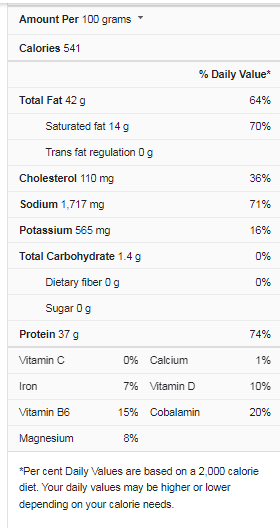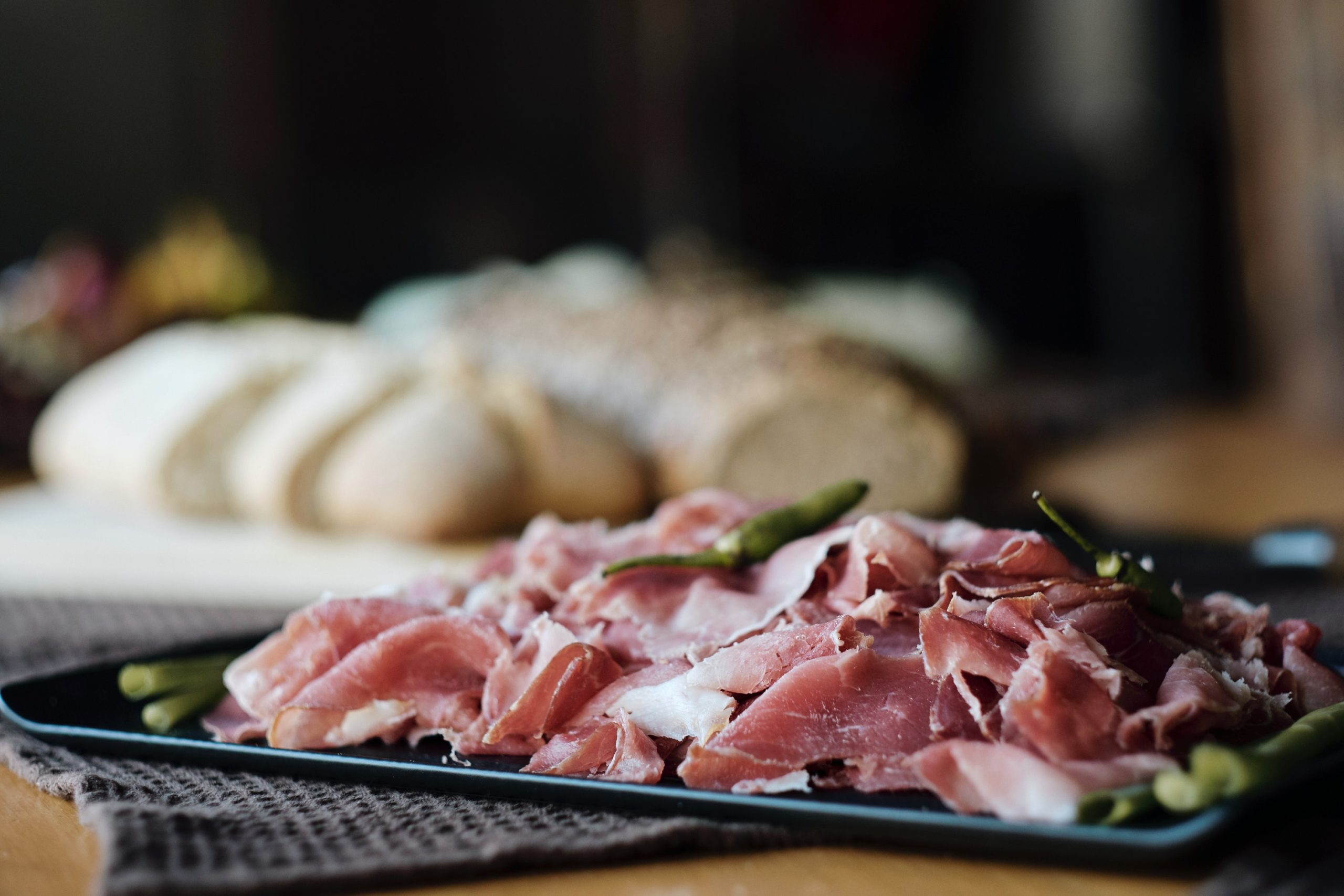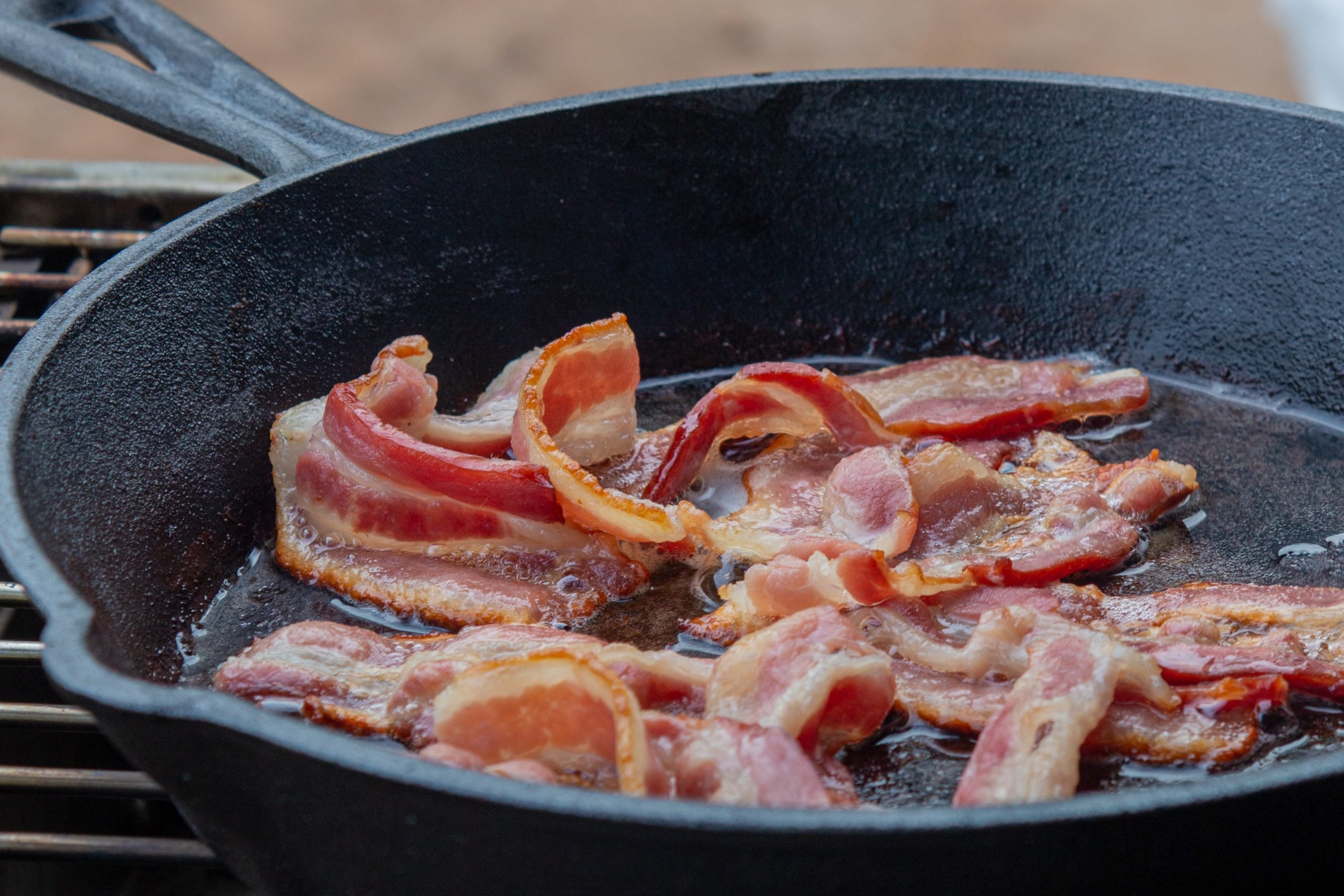Bacon is a common ingredient in the American diet. It’s classic breakfast meat as well as a meal we like to play around with—remember the bacon mania that resulted in bacon lattes and bacon donuts? On the other hand, Bacon is one of those supermarket commodities that is divisive. To begin, it should be consumed in moderation because it isn’t the healthiest food in the world.
When trying to eat healthier bacon, the first thing I want to search for is uncured bacon. This bacon hasn’t had any sodium nitrate added to it, and this is what most bacon producers use to preserve and color their bacon, giving it that lovely bright pink hue. Furthermore, numerous factors influence the quality of packaged bacon, beginning with the quality of the meat used in production and continuing through the curing and smoking procedures, resulting in anything from high-grade bacon to a product that poses a health risk.
Bacon Nutrition Fact
How To Choose The Best Bacon Cooking?
Bacon is a smoked pig chop that has been brined in a salt solution. Pork side and back cuts can be used to make bacon, and it is nearly always sliced off the pork belly in the United States. There are numerous varieties of bacon to pick from. You should think about the sort of cut, the technique of curing, and other considerations. Look for high-quality bacon as well. Bacon with a lot of additives might not be as tasty. Make sure to cook and store your bacon safely after you’ve chosen it.
1. Choosing Bacon Types
Select a cut style. The cut of bacon you desire depends on what you’re going to do with it, and the cut determines the thickness of the bacon.
The majority of bacon is regular cut, which comes in 1/16-inch strips. Thick-cut bacon is a little bigger than regular bacon, and the strips are typically double the thickness of regular bacon. Both can be used in traditional breakfast items, while thick-cut is superior for portions of pasta and soups.
The center-cut is a close-to-the-bone cut, and it typically contains around 30% less fat than other cuts. If you want to lose weight, a center cut is a way to go.
A slab of bacon can also be purchased at the butcher’s counter. This bacon is uncut, allowing you to choose your thickness.
Decide On A Cure Approach
Curing is the process of seasoning bacon with salt and spices to give it a particular flavor. Bacon is cured using a variety of processes.
Wet-cured bacon is the most common type. Saltwater and preservatives are used to brine wet-cured bacon. Wet-cured bacon makes up the majority of grocery bacon. If the curing method for bacon isn’t specified, it was most likely wet-cured.
Instead of being brined, dry-cured bacon is rubbed with salt and spices. You can either dry-cure your bacon or purchase dry-cured bacon from your local grocery.
Bacon that hasn’t been cured isn’t truly uncured. Curing is a procedure that all bacon goes through.
When bacon is branded as uncured, it signifies the product was made with more natural components. You might wish to opt for uncured bacon if you’re allergic to chemical preservatives.
Examine The Type Of Wood Utilized In The Cooking Process
Bacon can be grilled on a variety of surfaces. Bacon’s flavor is influenced by the type of wood used to cook, I, and. Hickory-smoked bacon has the most authentic bacon flavor. Try this type of bacon if you’re seeking a traditional breakfast dish.
2. Experimenting With Various Bacon Types
Experiment With Non-Pork Alternatives
Bacon is most commonly prepared from pigs, although there are alternative options. Duck, cow, and lamb can all be used to make bacon.
Duck bacon is lower in fat than conventional bacon, so it’s a good option if you’re watching your weight. Try duck bacon if you enjoy duck meat.
Pastrami is similar to beef bacon, and it has a flavor comparable to ordinary bacon but with a beefier undertone, and it’s also a lot juicier.
The flavor of lamb bacon is intense. Lamb bacon may be preferred if you appreciate lamb meals.
Use Bacon From Canada
A thoroughly cooked pig loin makes Canadian bacon, and it’s more ham-like than bacon. Typically, Canadian bacon is used on eggs benedict. If you’re creating eggs benedict, Canadian bacon is the way to go.
Add Pancetta To The Mix
Pancetta is pork belly that has been cured. It has a similar texture to American bacon, but it is not smoked.
It is spiraled and then cut before being cooked. It’s a great addition to a salad or a pasta dish, and this is because it keeps its shape longer than conventional bacon.
Experiment With Non-Meat Bacon
There are several types of vegetarian bacon available if you’re a vegetarian or catering to someone who is. Go to your local supermarket and look in the vegetarian aisle to find veggie bacon.
Tempeh is a fermented soy-based product. Tempeh bacon is marinated in spices to give it a bacon-like flavor. This can be used as a meat substitute in a variety of meals.
3 Choosing High-Quality Bacon
Examine The Ingredients List
In general, bacon with fewer components is of more outstanding quality. Artificially flavored and preservative-laden bacon may shrink even more during the cooking process, leaving you with little strips of bacon to consume. It’s also possible that it won’t taste as wonderful as bacon cooked with more natural components.
Pork, salt, brown sugar, and water should be the only items on the ingredient list.
Artificial flavors and preservatives are likely found in bacon and other substances. You may notice long and difficult-to-pronounce terms.
Keep An Eye Out For Nitrates
Nitrates are naturally occurring chemicals present in meals such as vegetables, and they’re sometimes used as preservatives in processed foods like bacon. While it’s unknown if nitrates are detrimental as an additive, nitrate-free bacon tends to have fewer artificial additives. It’s a good idea to go for bacon that isn’t high in nitrates.
Keep in mind that the term “nitrate-free” isn’t accurate. Nitrates are present in every bacon, and instead of sodium nitrate, celery is used to make nitrate-free bacon, and celery nitrates are more common in nature. It’s disputed if nitrate-free bacon is worth the extra cost because it’s unknown whether natural nitrates are better for you. However, the term “nitrate-free” may help you find bacon with less artificial seasoning.
Well-done bacon has more nitrates than medium-done bacon, which may harm your health. Vitamin C can help to offset the effects of nitrate. If you prefer your bacon well-done, go out of your way to locate nitrate-free bacon. After you’ve finished your bacon, enjoy some fruit or a glass of orange juice.
Locally Sourced Bacon Is The Way To Go
Locally sourced bacon may be the way to go if you want to support local farms. It is also likely to be free of additional substances and assist local farmers. Many local farmers use more humane methods than factory farms if you’re worried about ethical farming.
You can go to a farmer’s market in your area. There’s a good chance you’ll discover naturally sourced bacon there.
You might also go to a nearby food co-op. Because many co-ops collaborate with local producers, you’re more likely to discover nitrate-free bacon there.
Uncured Bacon Should Be Avoided
Bacon that hasn’t been cured isn’t authentic. All bacon is cured; therefore, the term “uncured” refers to bacon that has been cured using more natural substances.
If you like a more natural flavor, uncured bacon may be suitable. On the other hand, companies frequently utilize the label to persuade customers to spend more than is necessary.
If you notice uncured bacon on the ingredients list, double-check it. Check whether the bacon has fewer artificial flavors and preservatives than other types.
How Does Flawless Bacon Appear?
The bacon is done when it turns golden brown. Remove the bacon from the pan as soon as it reaches your preferred crispiness level and set it on paper towels to absorb the bacon fat.
When the color of the meat turns from pink to brown, and the fat has had time to drain out, bacon is considered wholly cooked. It’s alright to take the slices off the fire while they’re still a little chewy, but bacon is typically served crisp.
Conclusion
Keep an eye on your sodium intake. The FDA recommends a salt intake of no more than 2300 mg per day. In only two slices of some bacon types, you can get up to 20% of your daily salt need.
The difference between a thick and a thin cut. More bacon in fewer slices with a thick cut translates to extra sodium, fat, and calories. When it comes to thick bacon, one thing to keep in mind is how you cook it. Please don’t leave the heat on high for lengthy periods, as this can cause more nitrosamines to accumulate.
Because sodium ascorbate was employed, low-cost “pumping” was used. If the bacon has been “pumped,” the USDA requires sodium ascorbate to be added to lower the quantity of free nitrate in the product (and reduce the resulting amount of nitrosamines). As a result, if you notice this ingredient on the label, you may be sure that the manufacturing processes were less than ideal.




